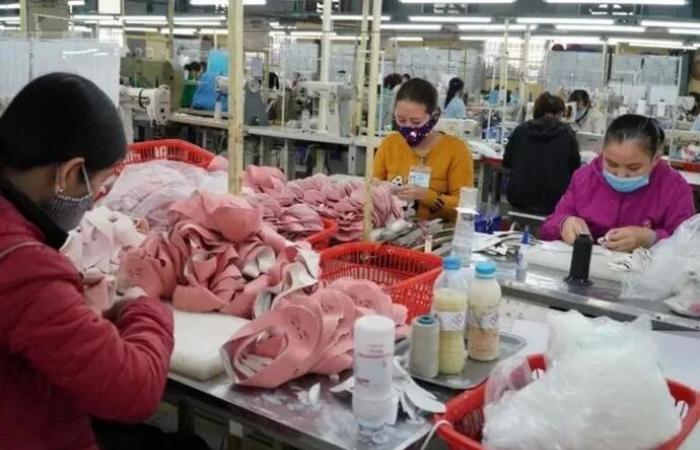>> The recovery of the textile and clothing sector is on track
>> Chinese investment flow in high technology
>> Ho Chi Minh City: opening of four international textile fairs
Speaking at a meeting to discuss this issue, Deputy Minister of Industry and Trade Phan Thi Thang highlighted the importance of the two sectors in the Vietnamese economy, hence the need for the country to take control of the source of materials for the production of textiles and leather.
| The transfer of investments to the textile and footwear raw materials sector requires more efforts from domestic companies. |
| Photo: VNA/CVN |
Textiles and leather shoes have always been Vietnam’s main exports, with turnover increasing by an average of 10% per year, according to deputy director of the ministry’s industry department Pham Tuân Anh.
In the first half of this year, the combined export turnover of the two sectors reached nearly USD 30 billion. They represent 16% of the country’s export revenues and 22% of the country’s industrial jobs, or nearly five million jobs.
However, their strength lies only in subcontracting, which creates little added value to products, Mr Anh noted. Vietnamese manufacturers still have to import raw materials – cotton, wool, silk, linen, synthetics and leather – and accessories from China, the Republic of Korea and other ASEAN countries.
Data from the General Department of Customs indicates that in the first half of 2024, imports of raw materials for these industries reached approximately USD 13.42 billion, up 14 percent year-on-year.
This dependence on imported materials will hamper the growth of industries as several countries put in place more regulations to control the quality of supply in order to achieve the global goal of net zero emissions in 2050. One of the requirements is that products must have a high percentage of intra-bloc origin, in countries where trade takes place.
Vietnam is also required to comply with rules of origin specified in free trade agreements such as the EU – Vietnam Free Trade Agreement (EVFTA). As a result, massive imports of raw materials from countries outside this bloc will disadvantage the country because it will no longer be able to benefit from the tax exemptions of these agreements.
Once the center for creating, storing and marketing raw materials for the production of textile and leather shoes is established, it will help companies trace the origin of materials, ensuring that all trade operates according to high standards and a high level of transparency.
The quality of materials will be evaluated regularly. An information platform will also be developed to keep domestic companies up to date with the latest production technologies and fashion trends.
Vietnamese companies will undertake field visits next month, to learn from companies in China and other countries that have successfully operated similar models.
VNA/CVN






